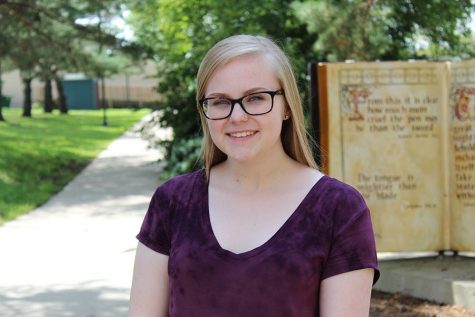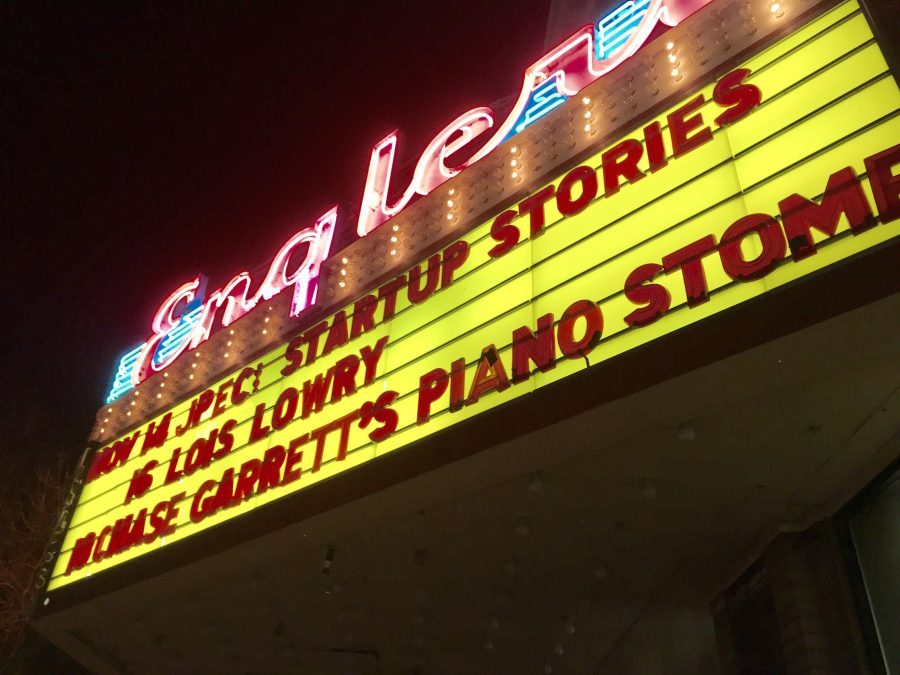Lois Lowry visits Iowa City
Lois Lowry, esteemed author of The Giver, visited the Englert Wednesday to give a lecture.
Hundreds of children, students and adults alike lined up outside the Englert Theater, some clutching books, some chatting excitedly and others peering over shoulders looking to see if the doors had opened yet. These people all eagerly awaited a lecture from Lois Lowry, widely admired author of The Giver quartet, Number the Stars and The Silent Boy.
“It’s nice to be here in Iowa. It feels very comfortable,” Lowry greeted the crowd, receiving a series of laughs. “I’ve even met a few democrats.” As the author of more than 40 books, winner of 2 Newbury medals and writing for 72 years, it’s no wonder Lowry is an icon for many engaged faces in the audience.
Lowry kicked off her lecture by sharing her own thoughts about her profession.
“I am fascinated by intimate details of the lives of writers,” she said. “Reading a book is an intimate act. You fall in love with the author, you want to be their best friend.”
Bringing up a slideshow with a photo of Nutshell by Ian McEwan, one of Lowry’s favorite authors, she let the audience in on how she enthuses about authors too. “I want to know what color Ian McEwan’s pjs are,” she said, laughing, the crowd soon following.
Lowry then went on to share a few personal anecdotes, in order to make the audience feel closer to her. “Some of you may be here to learn more about my life,” she said, “so I’ll tell you.”
Whether they were relevant or not, Lowry’s tales about her life gave an original flair to what many thought would be a generic speech. From a green bike, to living in Tokyo, she never failed to get the crowd’s attention.
Not all of Lowry’s stories were funny though; some were extremely heartfelt. One about her sister Helen was particularly tear-jerking. Not only was Lowry’s sister the inspiration for Lowry’s novel, A Summer to Die, she was an inspiration to Lowry herself.
“She was my first teacher,” Lowry said, enthusing, “my partner in crime.”
Lowry’s shared other fond memories of her sister, such as her telling Lowry what she had learned at school every afternoon, and teaching Lowry to read.
Shortly after her Lowry’s fourth child was born, however, she got a telegram informing her that her sister had passed. Over 1500 miles away, Lowry and her sister weren’t as close as they were when they were kids, but that didn’t help the heartbreak Lowry endured.
“I began to tell the story to myself, again and again,” Lowry said “talking about things is how we begin to understand them.” This was Lowry’s coping method, which eventually seemed to work. “I began to gradually accept something that had seemed unacceptable,” she said.
These hardships in Lowry’s life greatly shaped her writing style and her works as well.
“By telling each other our stories we begin to put ourselves back together,” she said, obviously very passionate about this process of healing she relied on so much.
“All of my books follow characters on a quest to be happy,” Lowry said. “They begin with someone who is broken.” And not only were personal struggles an inspiration for Lowry’s writing style, but a personal hobby was as well.
During her time in Japan, Lowry acquired a fascination for the culture, one of her favorite things being “Kintsugi” which is the Japanese art of repairing broken pottery with a golden lacquer. Lowry showed her audience many photos of this somewhat obscure practice, constantly gushing over the beauty, explaining its conveyance of awe and restoration.
“Something can become more valuable after it has been broken,” she said. This belief, brought about again many times in the lecture, truly captured Lowry’s spirit in the most motivating way possible.
About as admirable and experienced as authors come, Lowry continues to be an inspiration for all ages. As dozens of kids, teenagers, adults and elders lined up excitedly after the lecture to get their favorite novel by Lowry signed, it was clear that she would continue to impact with her works for generations to come.
Your donation will support the student journalists of West High School. Your contribution will allow us to purchase Scholarship Yearbooks, newsroom equipment and cover our annual website hosting costs.

Mary Vander Weg is a senior at West High, and this is her third year with the West Side Story. In her free time, she can be found writing - whether it...



